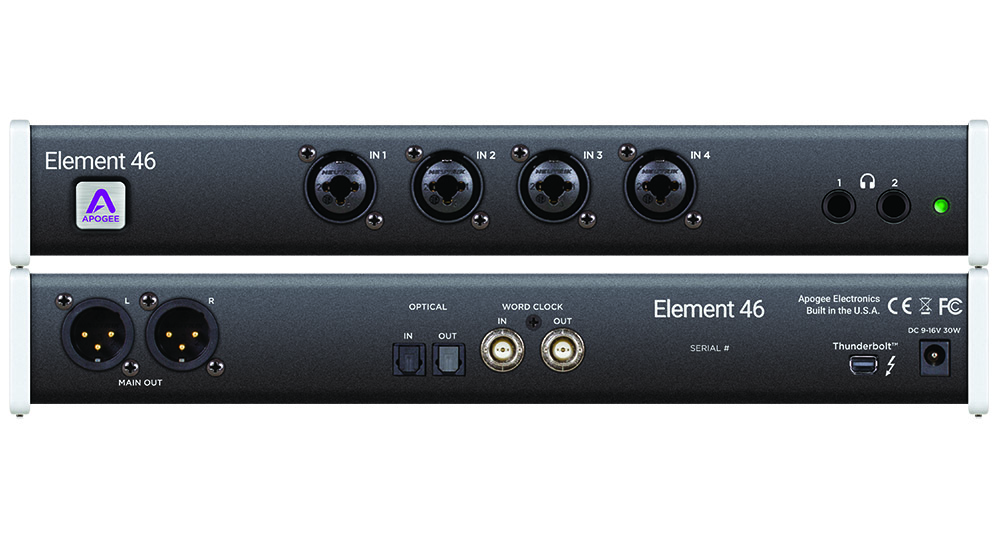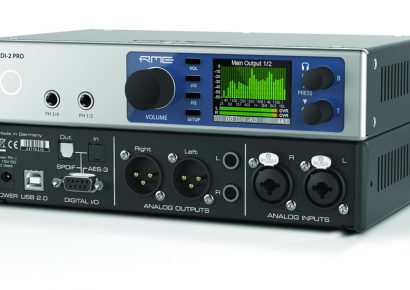What I just loved about this unit was just how simple it appeared when I took it out of the box for the first time. There is a great feeling of negative space going on in the design, which moves away from the almost uncontrollable urge for many manufacturers to lather the surface of their units with buttons, knobs and dials. The Element 46 features none of this on the front panel, just four combination XLR/TRS inputs and two TRS headphone outputs. That’s it – no gain controls, no volume pots, nothing else. Around the back of the unit a stereo pair of XLR outputs is met by a pair of optical digital connections, a Word Clock in and out and a Thunderbolt connection. There is nothing more than is needed and the whole thing offers no external parts that can be damaged when travelling.
The four microphone preamps are of exceptional quality, as is the analogue-to-digital conversion. All the control over levels and signal routing is done via the software interface. Some of you will prefer to have a physical control for setting gain levels and adjusting headphone and output levels to suit. Others will realise that these don’t need to be adjusted regularly, and will love the benefits of recalling pre-stored settings in a flash. Importantly, what is undeniable is that the quality of sound and the ease of use is just brilliant. You don’t need to touch the box once everything is plugged in; just control it all from your computer, which you will be interacting with anyway. It’s a solid audio workhorse that offers studio quality A/D conversion and microphone preamps, yet it can go anywhere.

